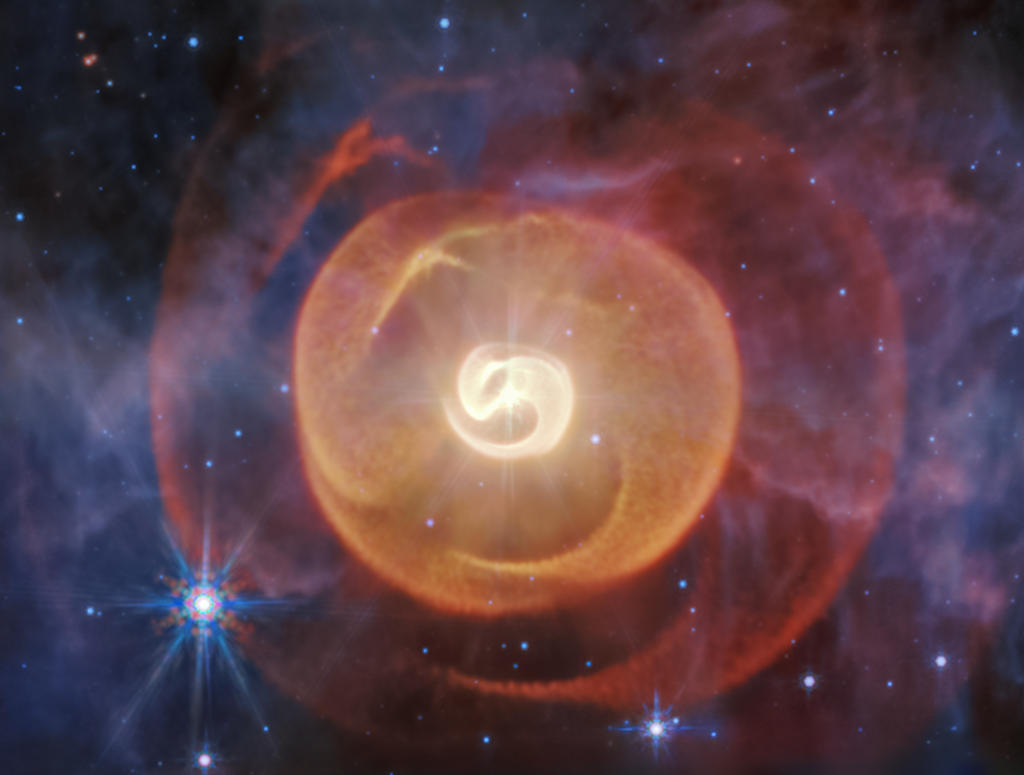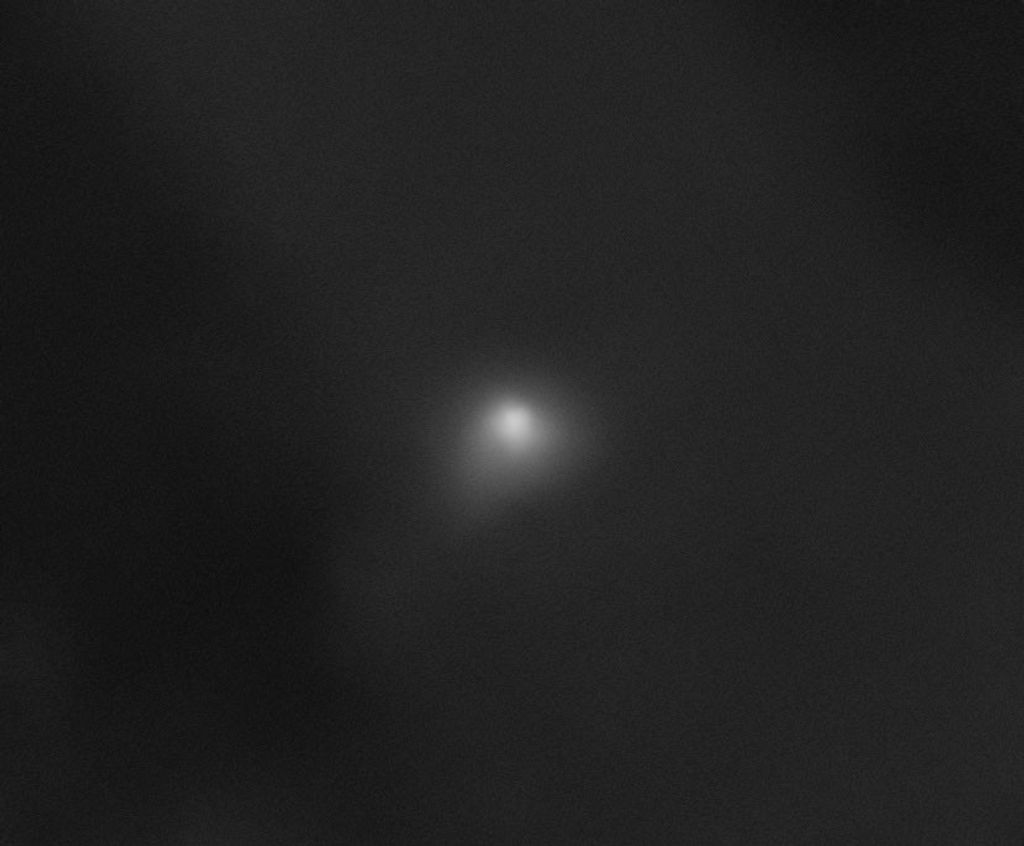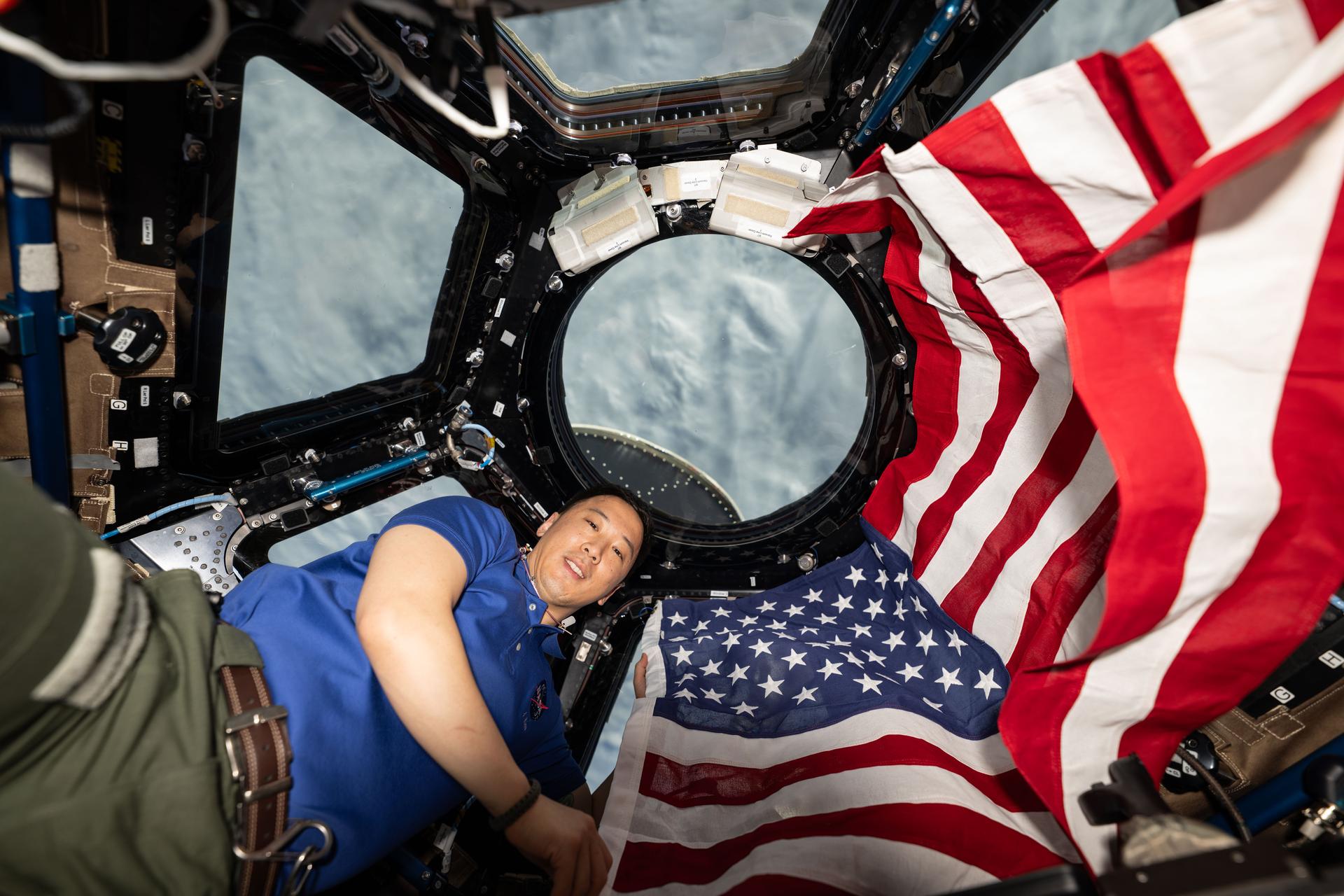1 min read
Infrared Universe: Kepler’s Supernova Remnant
Observations from the Hubble Space Telescope, the Spitzer Space Telescope, and the Chandra X-ray Observatory each highlight distinct features of the supernova remnant, a fast-moving shell of iron-rich material from the exploded star, surrounded by an expanding shock wave that is sweeping up interstellar gas and dust. The combined image unveils a bubble-shaped shroud of gas and dust that is 14 light-years wide and is expanding at 4 million miles per hour (2,000 kilometers per second).
Low X-ray: The Chandra X-ray data shows cooler X-ray gas (lower-energy X-rays) [colored green] residing in a thick interior shell and marks the location of heated material expelled from the exploded star.
Credit: NASA, ESA</a>, R. Sankrit and W. Blair (Johns Hopkins University)
High X-ray: The Chandra X-ray data show regions of very hot gas (higher-energy X-rays) [colored blue] located primarily in the regions directly behind the shock front.
Credit: NASA, ESA</a>, R. Sankrit and W. Blair (Johns Hopkins University)
Optical: Images from the Hubble telescope [colored yellow] reveal where the supernova shock wave is slamming into the densest regions of surrounding gas.
Credit: NASA, ESA</a>, R. Sankrit and W. Blair (Johns Hopkins University)
Infrared: The Spitzer telescope data shows microscopic dust particles [colored red] that have been heated by the supernova shock wave. The dust re-radiates the shock wave's energy as infrared light.
Credit: NASA, ESA</a>, R. Sankrit and W. Blair (Johns Hopkins University)
About the Infrared Universe Collection
The human eye can only see visible light, but objects give off a variety of wavelengths of light. To see an object as it truly exists, we would ideally look at its appearance through the full range of the electromagnetic spectrum. Telescopes show us objects as they appear emitting different energies of light, with each wavelength conveying unique information about the object. The Webb Space Telescope will study infrared light from celestial objects with much greater clarity and sensitivity than ever before. Explore the Infrared Universe.
- Release DateJune 25, 2018
- CreditVideo: NASA, ESA, Gregory Bacon (STScI)
Downloads
Share
Details
Laura Betz
NASA’s Goddard Space Flight Center
Greenbelt, Maryland
laura.e.betz@nasa.gov
NASA, ESA, Gregory Bacon (STScI)
































